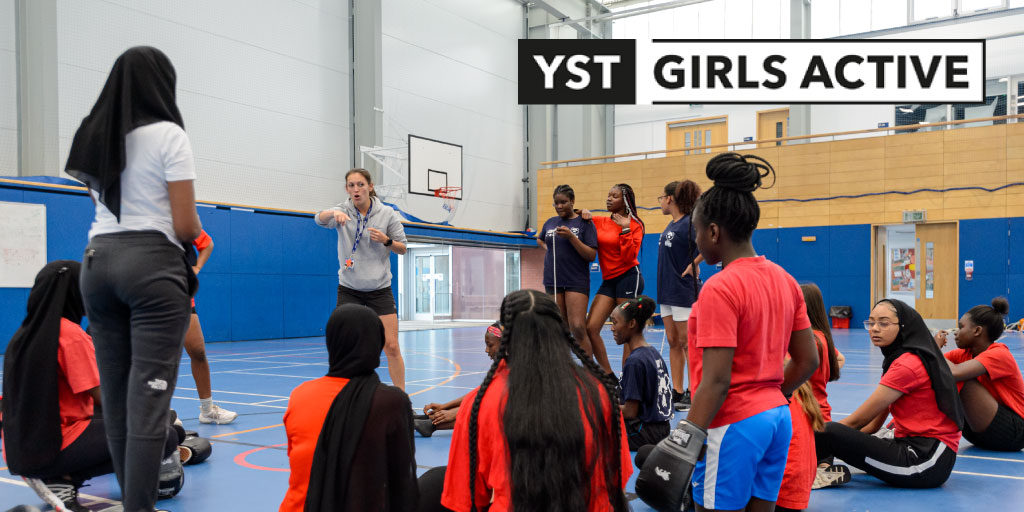The latest report from the Youth Sport Trust has revealed that barriers to sport for girls continue to be a problem. The Girls Active Programme surveyed nearly 30,000 girls between 2018 and 2021 and found that nearly 40% didn’t feel comfortable doing sport during their period. A third saw confidence to do sport and even being watched while doing sport as serious impediments, with all the statistics rising six to ten points in just three years.
The problem is not an isolated one either. Tokyo 2021 may have been a great success for British athletes but for female athletes, not so much. Pink (yes, the singer) has offered to pay the fines levied against the Norwegian beach handball team, when they refused to wear bikinis, despite citing that they had no athletic benefit, and the males could wear shorts. In fact, many archaic measures in professional sports keep female athletes from wearing the clothes they might typically train in, such as shorts, leggings, and tracksuits.
What does that mean for girls in school?
Statistics show that up to 40% of girls are uncomfortable enough not to be active at all. Yet the other 60% or so do go on to be active, even doing so throughout their lives. If they do become professional athletes, scenarios like those at the Tokyo 2021 won’t be uncommon. Roland Garros and Wimbledon have both come under fire for their dress codes, most infamously banning shorts and Serena Williams’ catsuit, post-pregnancy, that essentially kept her alive. When many of the fines were brought to light, there are few rules that had any purpose other than the aesthetic.
Schools can be one of the most important places to break this trend and help girls to develop a positive impression of sport. According to a report released by Sport England; however, more than just an impression is necessary. Just 10 percent of young teenage girls meet their daily recommended levels of activity according to the report. If we are to get girls moving and keep them moving, we need to start looking at and re-thinking some of these old-fashioned rules that keep girls from feeling comfortable playing sport.
As the report said, a third of girls struggle with being watched or being confident enough to play sport. Part of this is being seen to play a sport deemed masculine, being seen physically exerting themselves, or even playing in mixed-gender games. Similar to a persons’ reaction to bees flying close, layers of anxiety and fear in girls can lead to truancy, general misbehaviour or simply not trying at all.
Avoid policing their uniform
Think PE kit. Replace tight-fitted clothing that draws attention to different body types or the impacts of puberty with options for looser-fitting shorts, tracksuits, and jogging bottoms. If you announce before the lesson that they have a choice of kit, then they’re likely to simply wear what’s comfortable for them.
These types of changes can give girls choices, especially as they develop through puberty. It also gives inclusive options for those who, for example, need to wear certain clothing for the sake of cultural or religious reasons. For young women seeking something discrete whilst menstruating, jogging bottoms rather than tight leggings or cycling shorts are preferable.
Some schools often have rules that seem like they are focused on discipline and deportment but largely stress uniformity and traditionalism. It may have made sense fifty years ago to employ the same rules, that supported Victorian values of feminity. Unlike then, we know a lot more about the power of physical activity. And it needs to be focussed on just that. Being active.
It may cause you to rethink some of your reprimands. It might be that without noticing, your PE uniform actually punishes girls for the natural features of their bodies. What is tidy and uniform for one body type may not be for another. The solution is to make decisions about PE kits collaboratively. Invite governors, parents, and people in your community to help make sure these decisions are made with inclusion at the heart. Whilst far more time-consuming, you are more likely to prevent girls from being unfairly targeted by the need for traditional uniformity, which can only serve to further ostracise them from sports.
Consider looking at behaviour a little differently
Don’t assume that misbehaviour on the field or lack of engagement is something to be ignored or reprimanded. Opt for activities that get them to try something, even if it’s to experiment with where they put their arms when they run, or what concrete skills to focus on when they’re kicking a ball. Sometimes, if something is even done with a tenth of the effort, it’s better that they tried and were encouraged than to not have done anything at all.
Most importantly, physical activity is as much a conversation as it is actually being active. Girls are more likely, especially in mixed school environments, to stop doing sport at around 13. That means, getting girls to do sport may be something of a conversation. Consider trialling separate male and female teams or PE classes and when they’re brought together, highlight good sportsmanship skills from both genders. It gives males and females the opportunity to value what they can learn from each other.
Don’t ignore a girl’s request to do a sport. If you have the equipment and the capacity, why shouldn’t they be joining in? It’s not only girls that are good at sport that should feel heard. Making girls of all abilities feel heard and represented can keep them engaged for far longer, and they’ll be more likely to take up the sport as a lifelong hobby.



